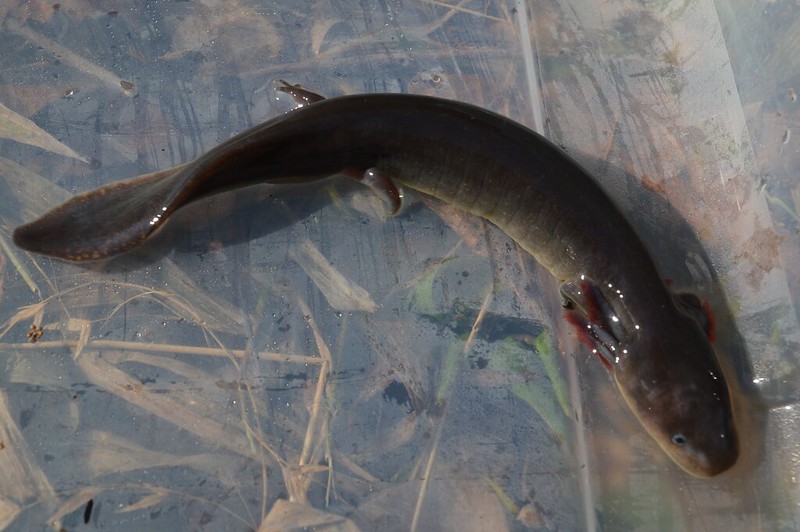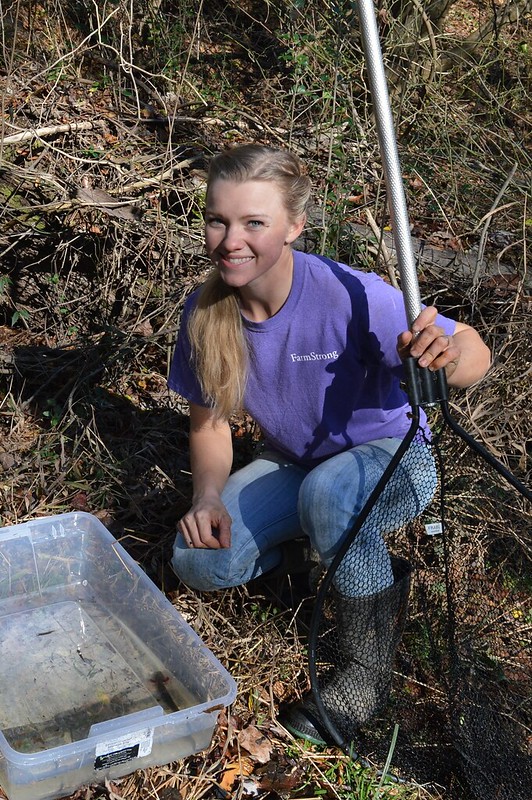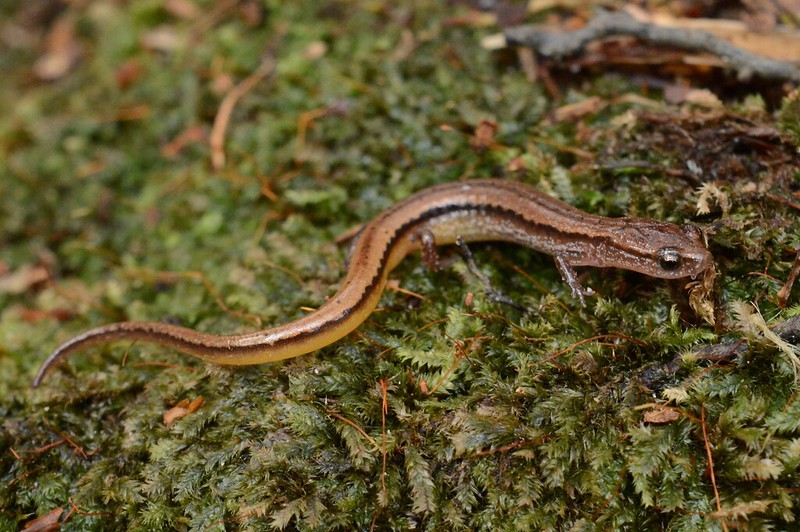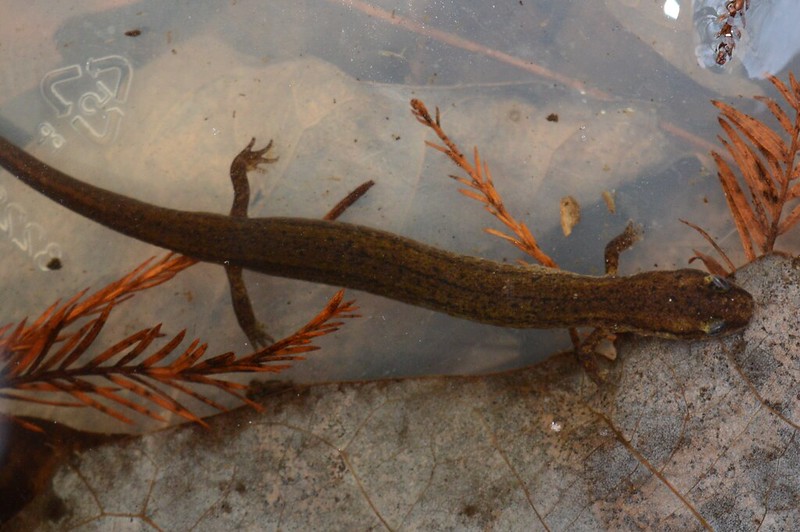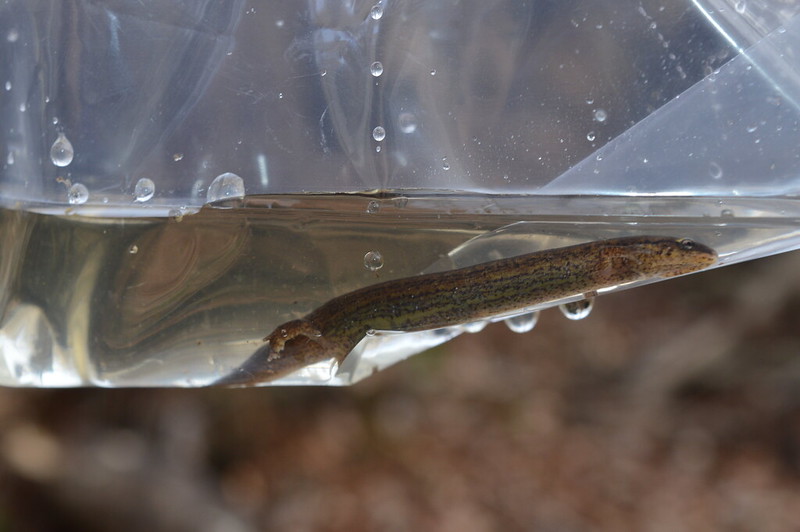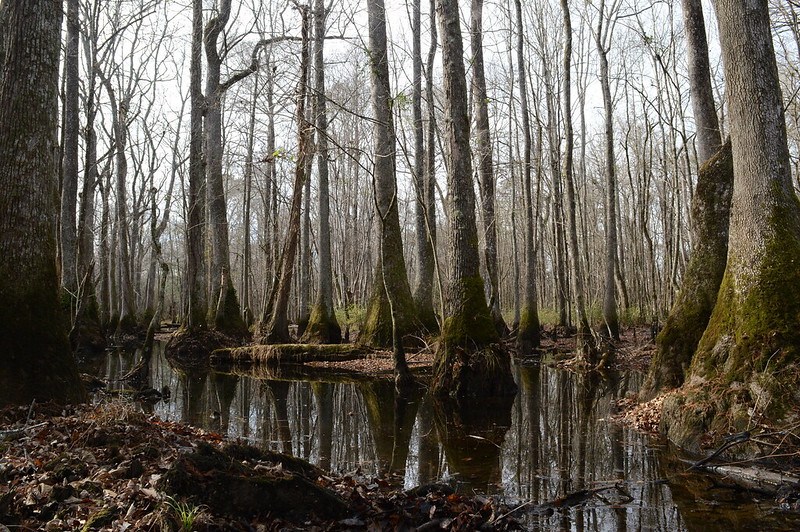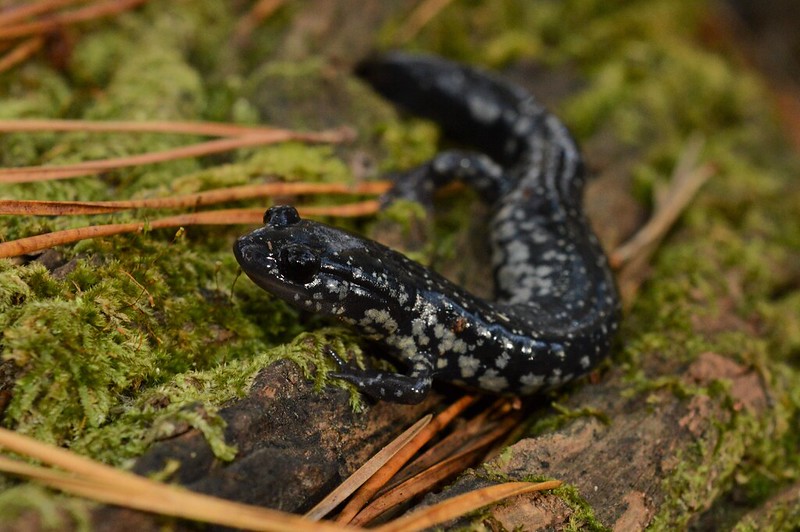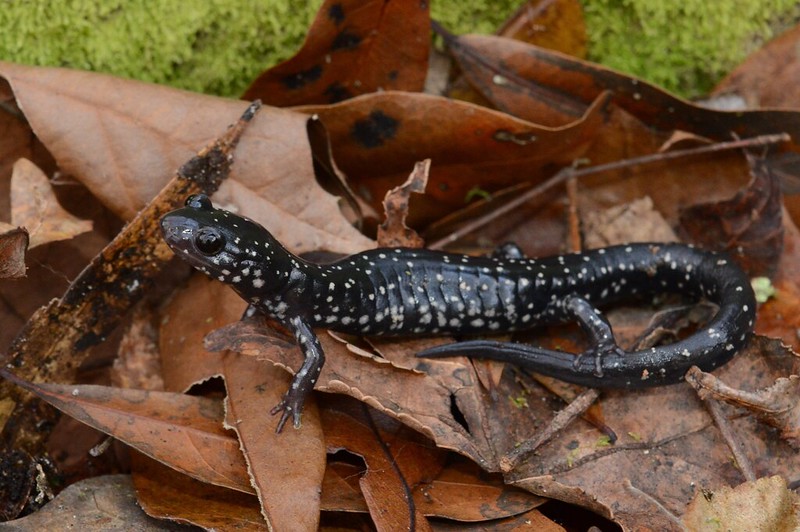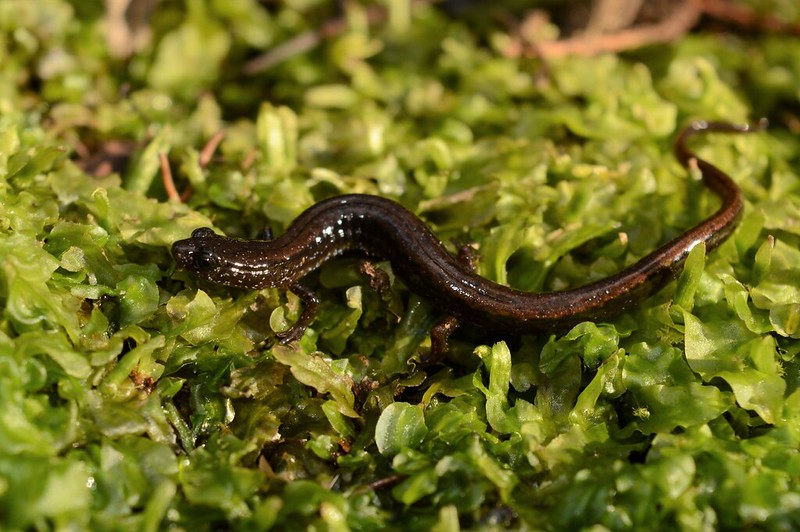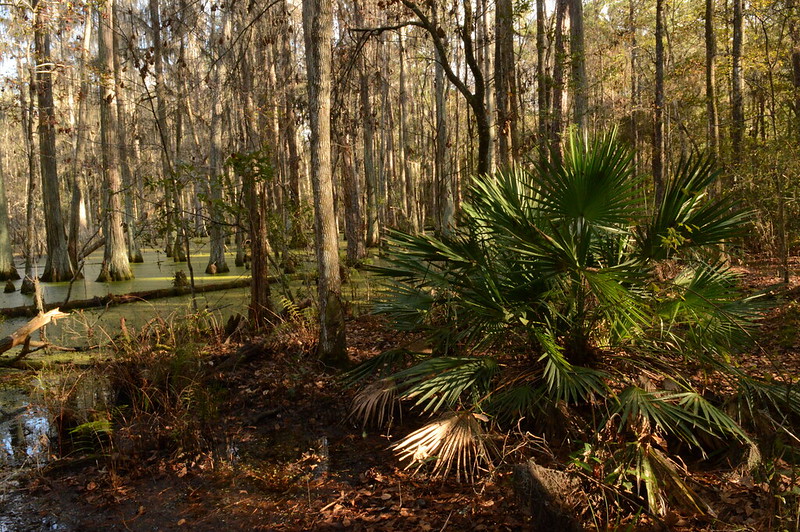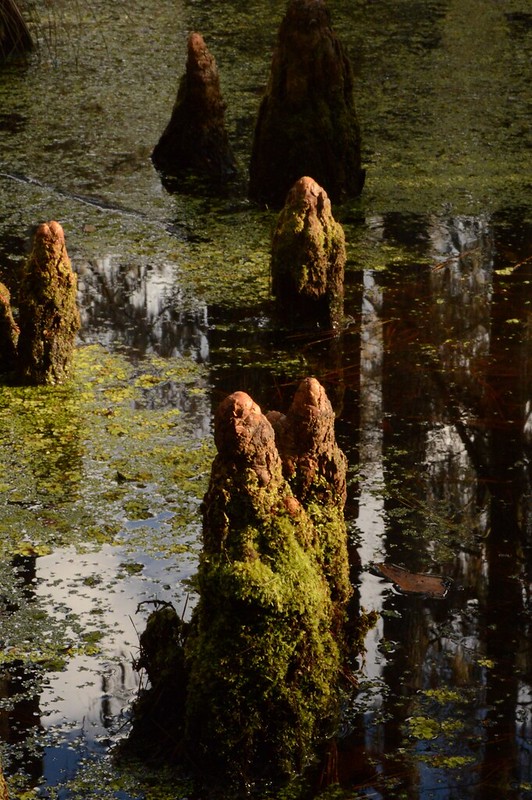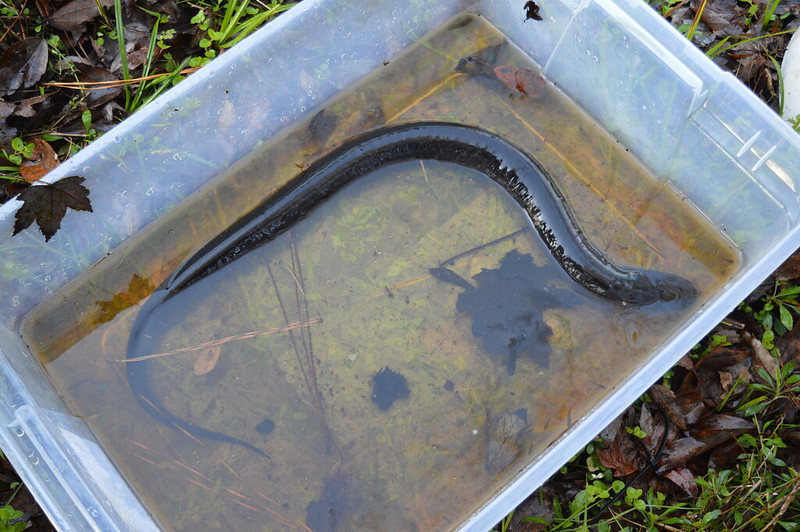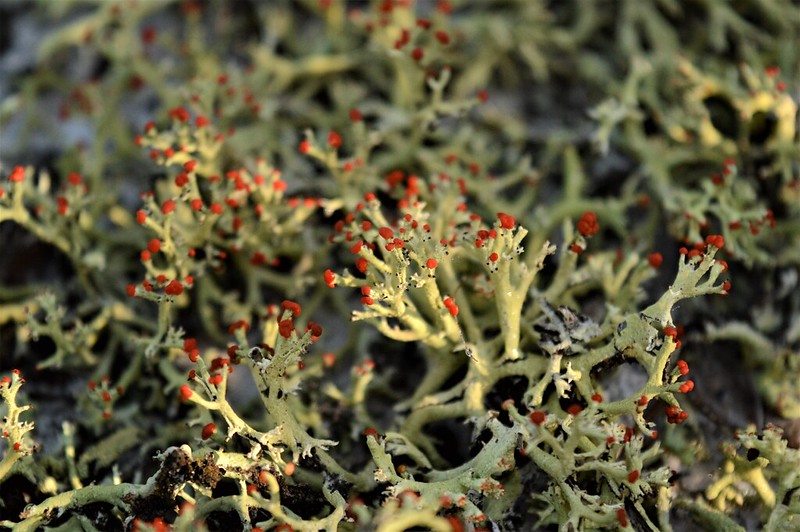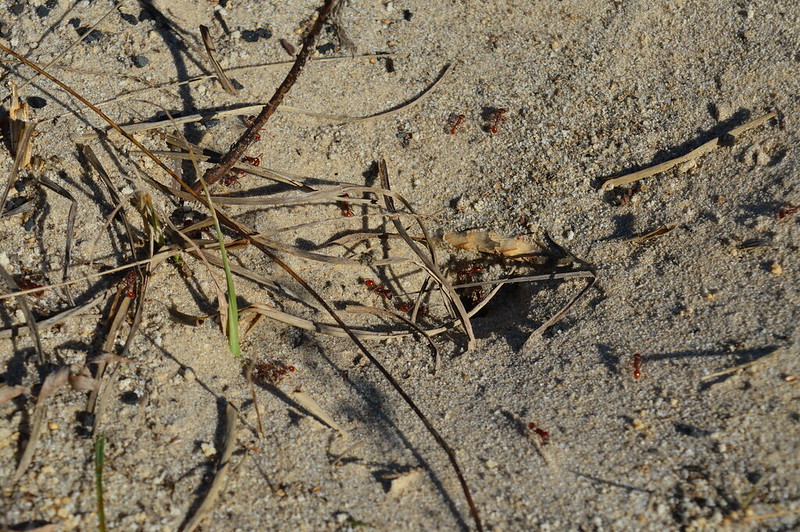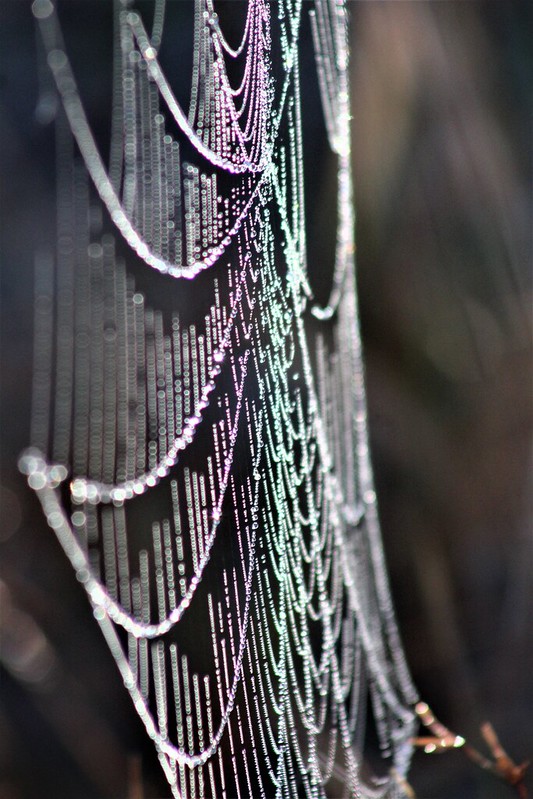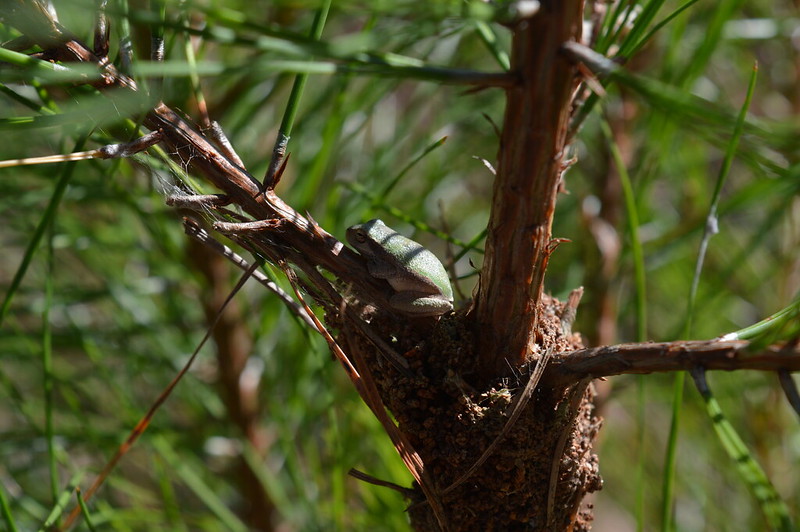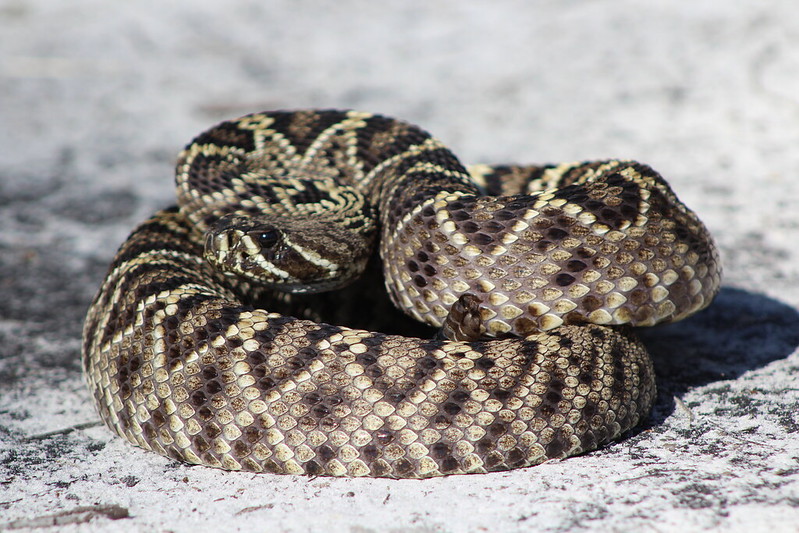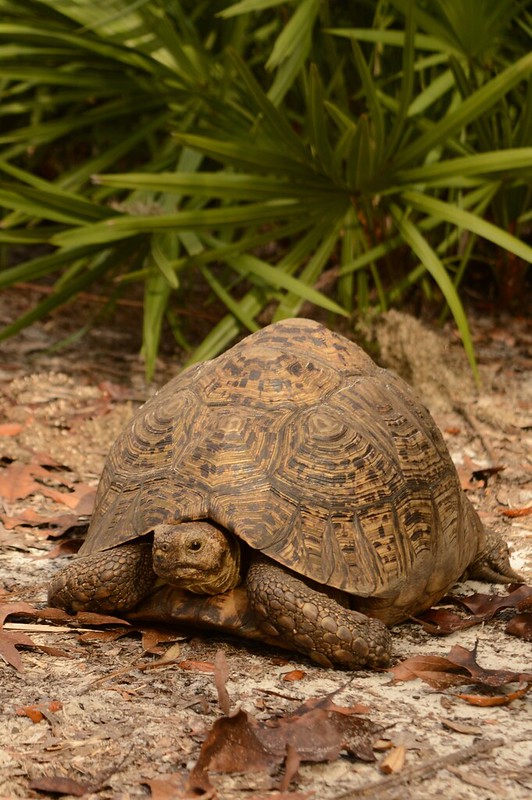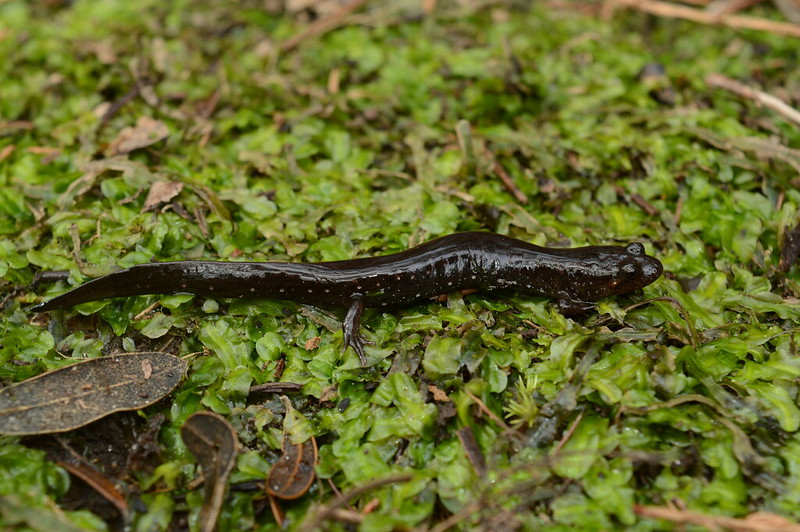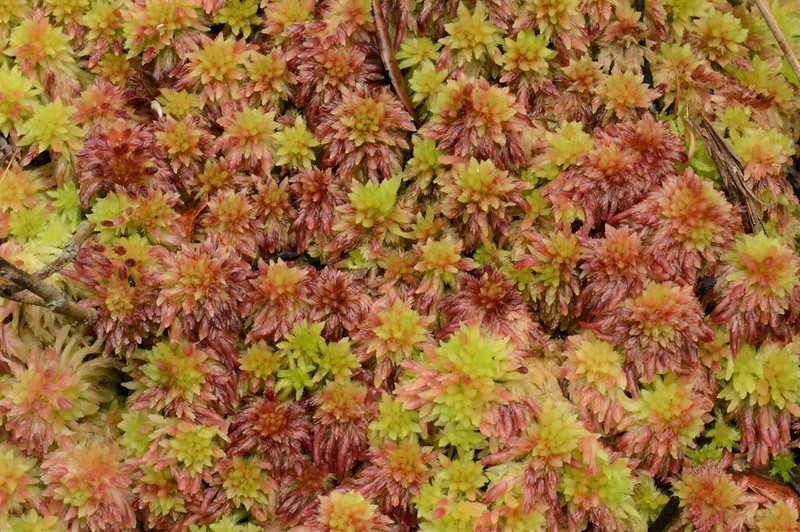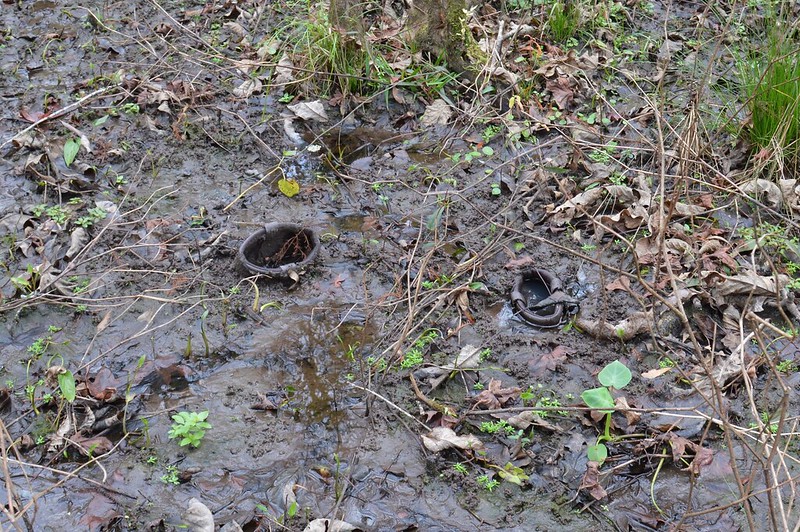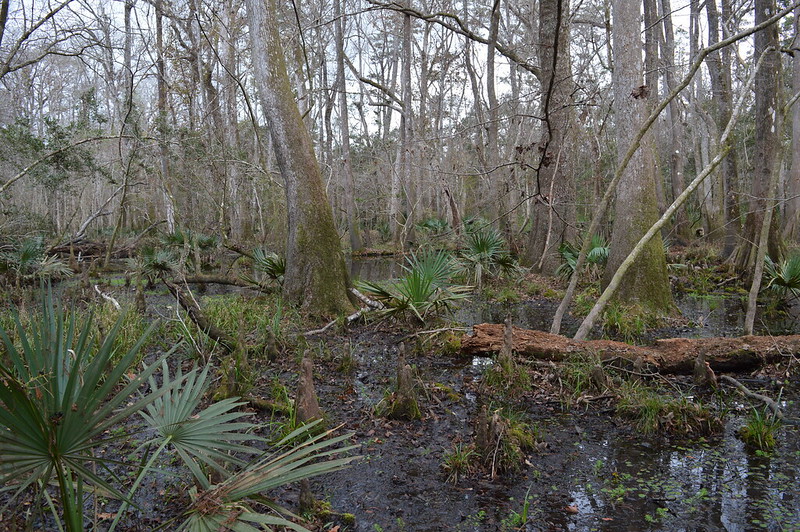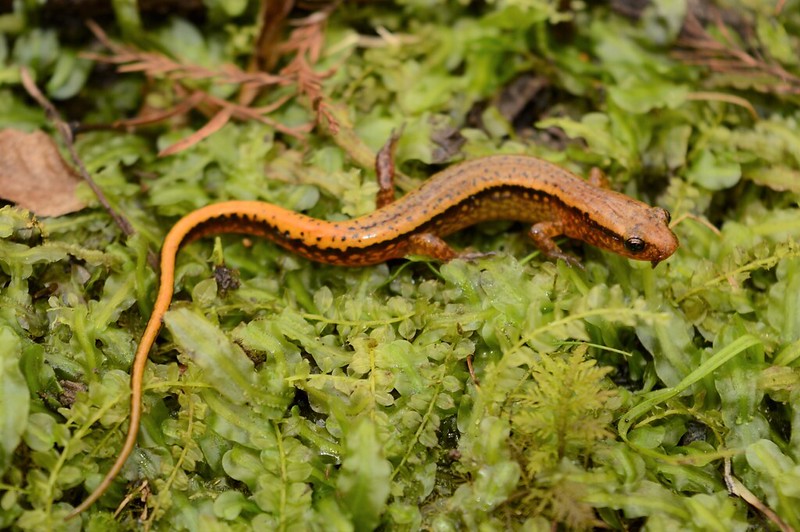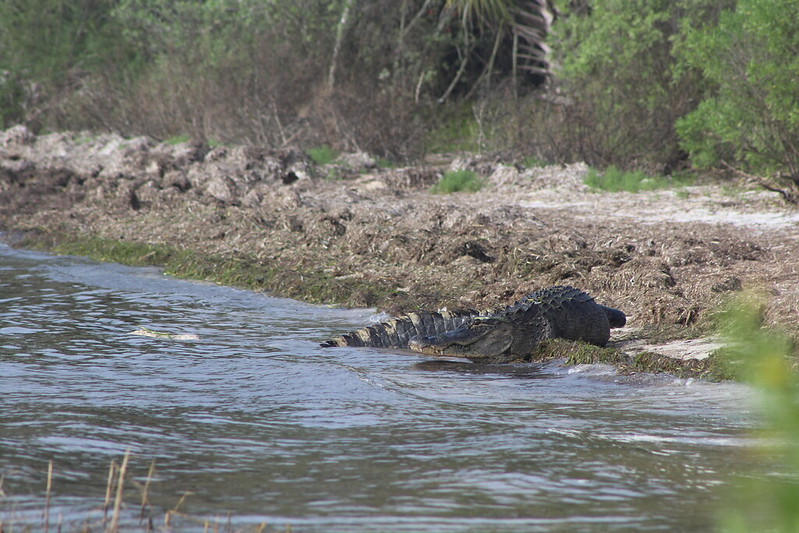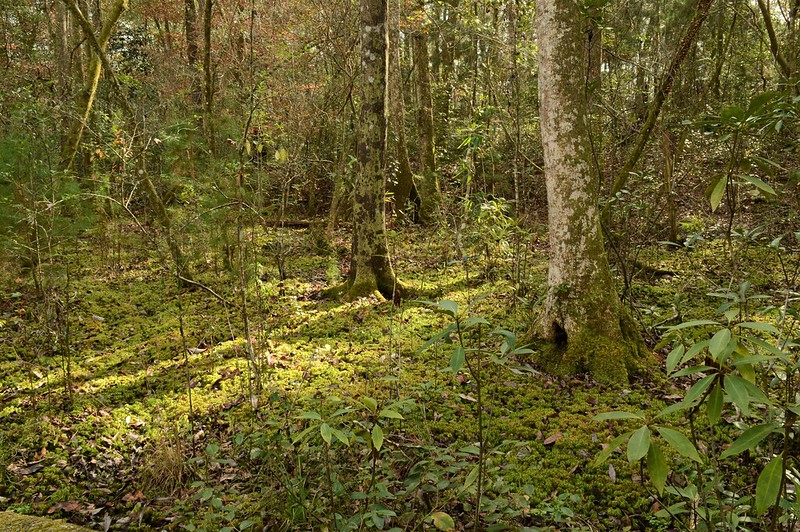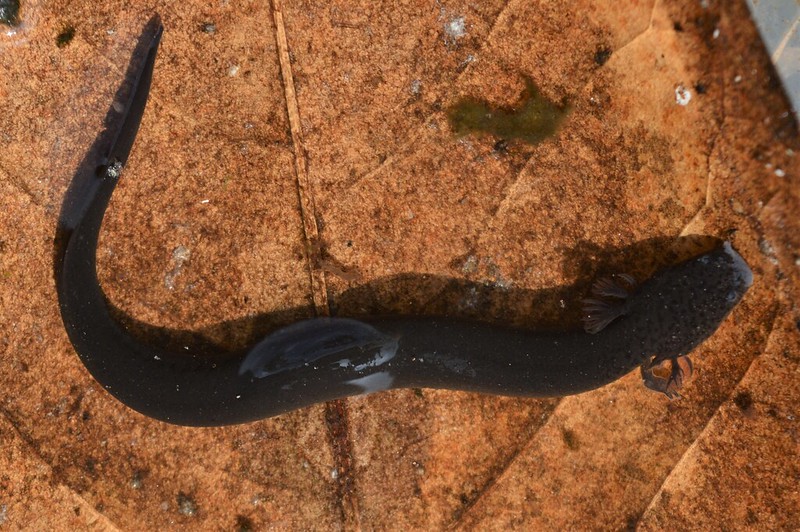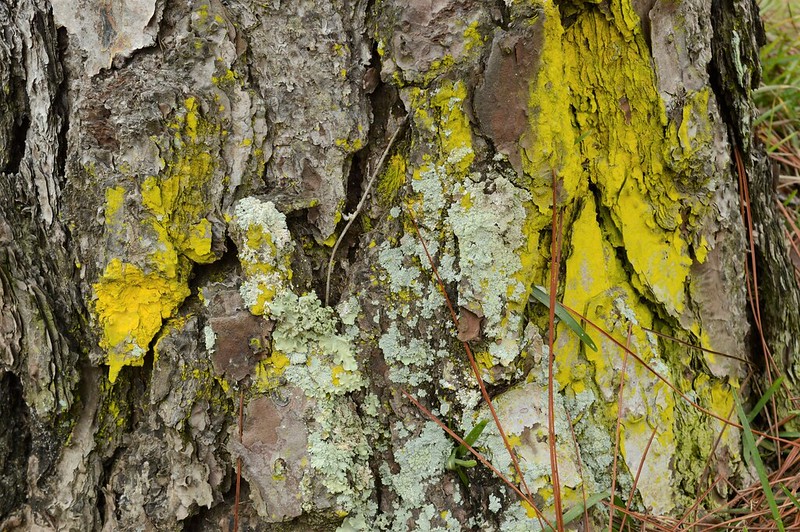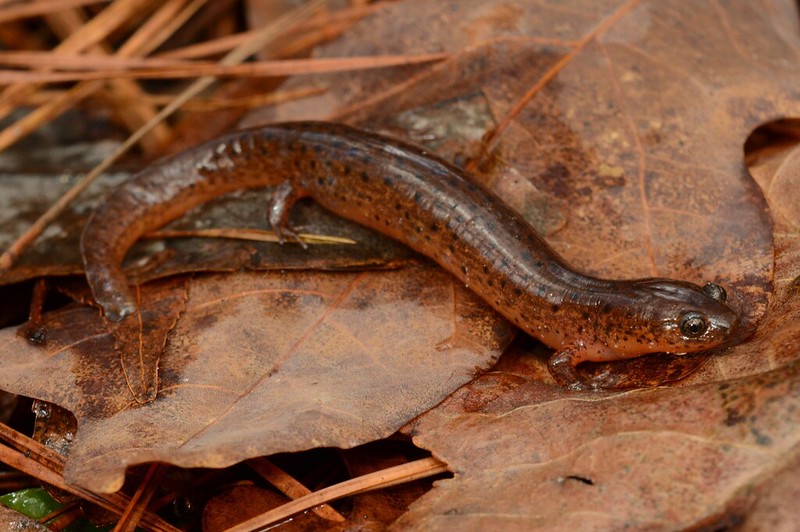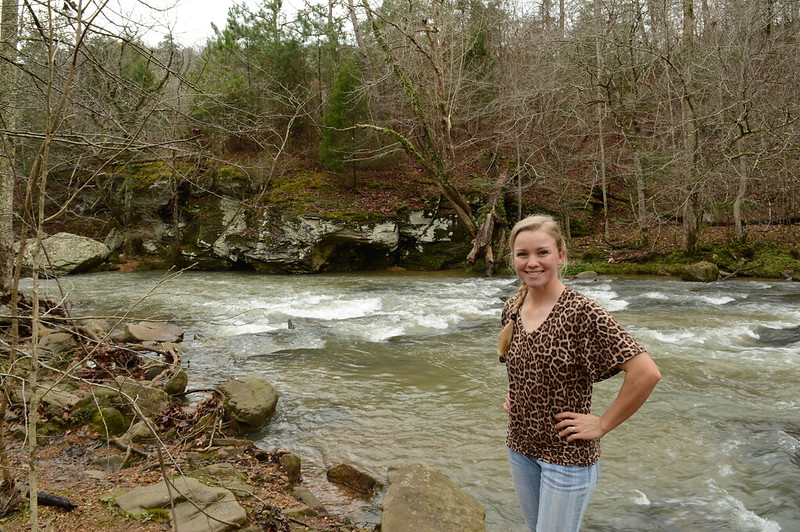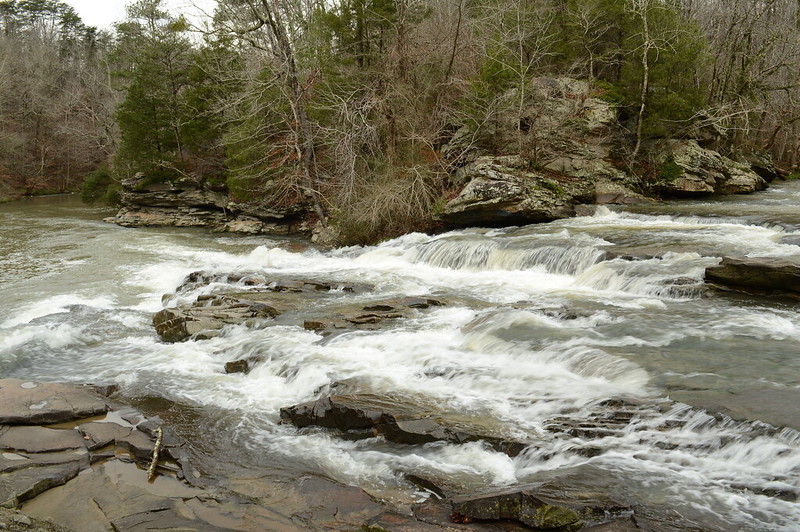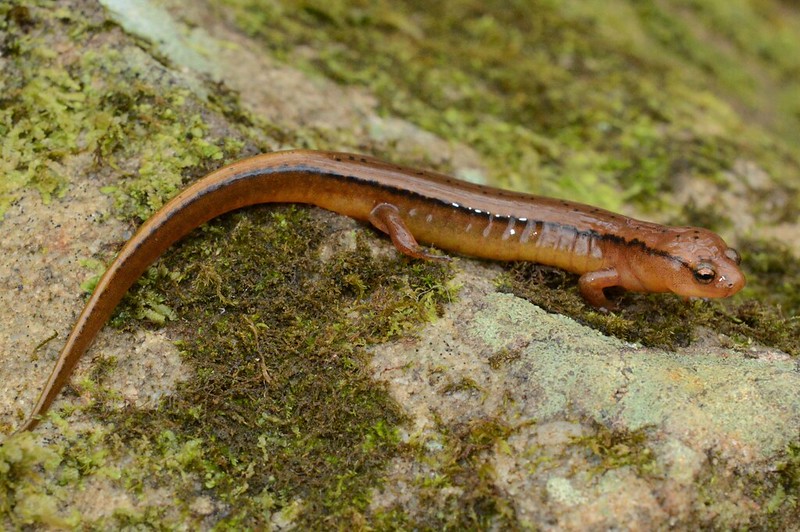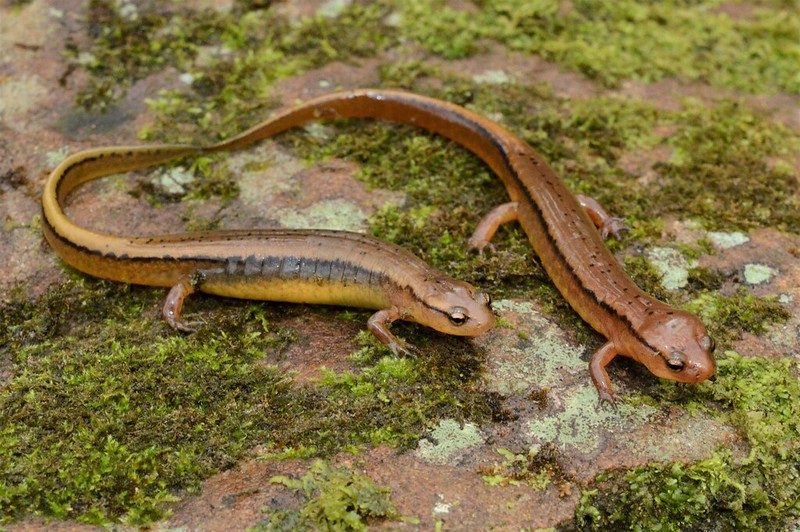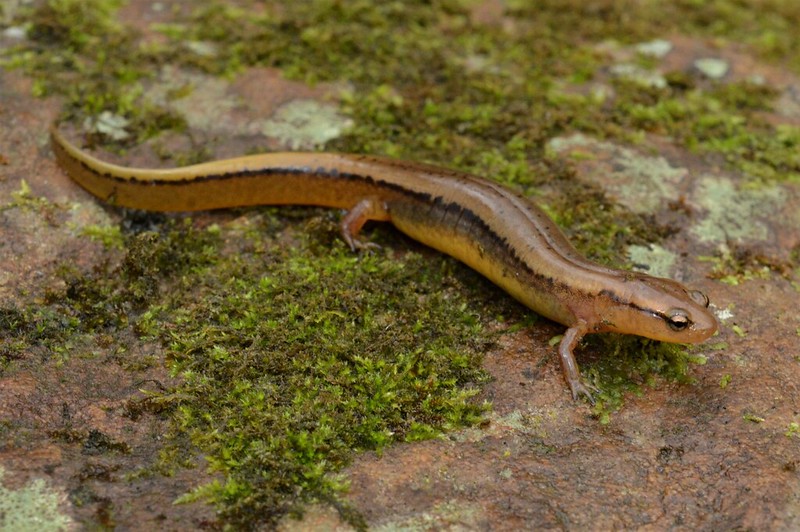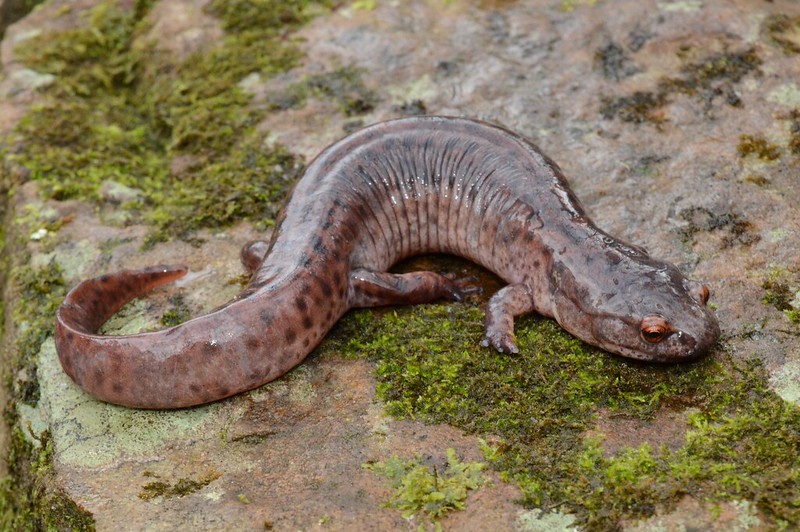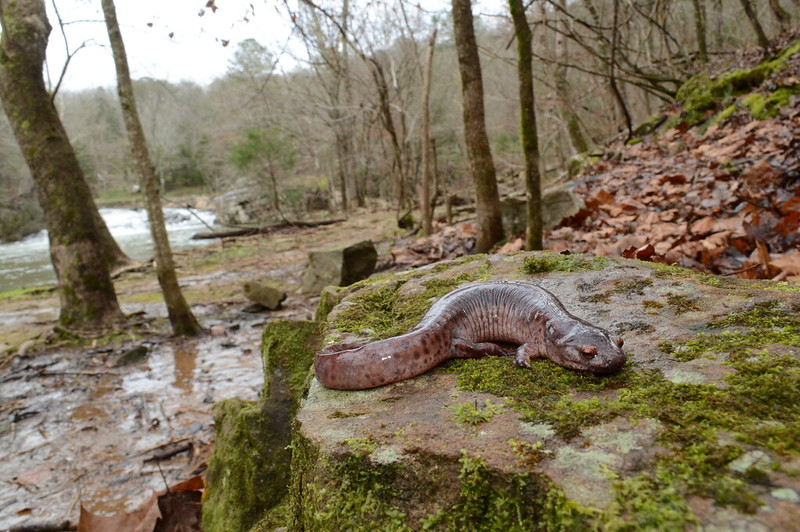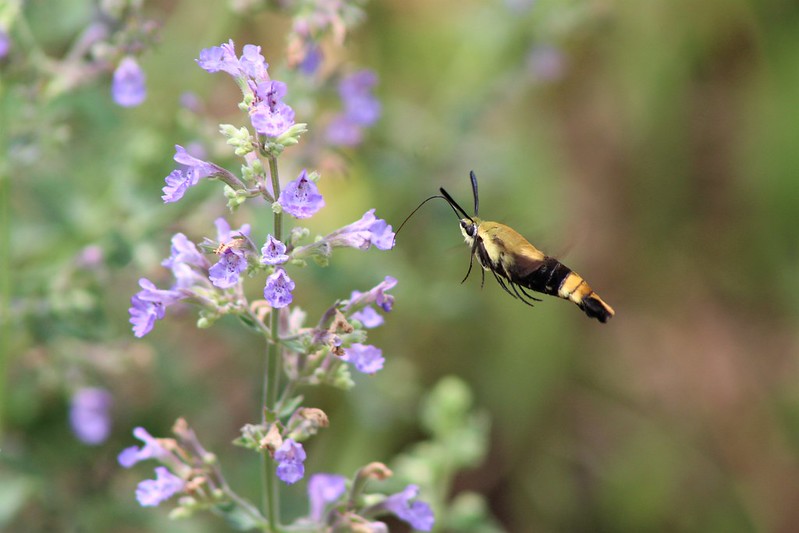Nathan and I took a whirlwind road trip from Missouri to the Southeastern states in search of salamanders to knock off our life list. We have a fun goal to see all of the salamander species in the United States in our lifetime, and we’ve now seen 145 of the current 249 species. My boss gave me several days off for the holidays so Nathan wanted to make the most of it. I was slightly dreading all of the driving, but all in all it was a fantastic trip. The people who we met and spent time with really made the trip a blast! There was one fella who we ran into on a Georgia trail who we never would’ve dreamed the odds of us meeting at random. I’ll get to that later in the blog, because it is so awesome!
As a side note, I don’t include specific location names because many of these salamanders are protected and in vulnerable habitats. We spray our boots with disinfectant between locations to prevent potential disease spread.
It’s almost customary for us to drive through the first night on long road trips. Packed with a trip CD, minnow traps, cameras, pork BBQ for our lunches, and other typical vacation items, Nathan started out driving from Aurora, MO. He got us all the way to Knoxville, TN when we swapped driving at about 2 AM. Even though it was late, I had a flow of energy running through my veins driving through Appalachia again, my favorite place in the world. After grabbing some McDonald’s breakfast, we arrived at our first herping spot near Greenville, NC at 9 AM to meet up with Dr. David Beamer, Biology Instructor and Lead Researcher at Nash Community College.
This guy’s the real deal. Amongst many other things, Dr. Beamer has been doing genomic research on salamander species, particularly dusky salamanders and two-lined salamanders. He may just be the reason we never reach our goal to see every salamander species because there will be new splits to species, darn it. But it’s all good and he’s an awesome guy.
We were targeting a Neuse river waterdog at our first spot. Before we got started, Dr. Beamer explained that the leaves we dip-netted in the stream had to be “well-seasoned” with decay/micro-organisms and have a bycatch of eels. We were on the right track; we dip-netted a dwarf waterdog or two, then six juvenile Neuse river waterdogs. Adult Neuse river waterdogs are absolutely beautiful with their black spotting, but the juevniles are more gold-striped with a couple tiny black dots.
Nathan got “set free” (a term coined by Dr. Beamer) when he tripped in the water while dip-netting and got his boots filled with water. “You’re a free man!” Dr. Beamer pronounced. Don’t have to fret and teeter over staying dry now. Like a couple of crazies, Nathan and I neglected to bring hip waders on this trip focused on aquatic and swamp-dwelling salamanders.
Next, we zipped over to another couple different locations to get our other lifer salamander species that live in different habitats. Dr. Beamer turned up a Chamberlain’s dwarf salamander and a southern dusky salamander under some wet leaf litter. Later at a swamp, Nathan and Dr. Beamer caught eight many-lined salamanders. They like hiding in partially-submerged small stick piles pushed up together. Dr. Beamer found a particularly good stick pile and said it was by far the best stick pile we had come across yet (it didn’t look that out-of-the-ordinary to me, but if he says so…) We removed some leaf litter, then Dr. Beamer made a tsunami, swooshing up the muck with his boots for a many-lined salamander. If you took a step back, it looked like we were actual lunatics. We snapped a few photos and talked about our other hobbies outside of herping on the way back to our cars before saying goodbye.
As we drove to our AirBNB and thought about what to have for dinner, I had the random thought to check to see if Fayetteville, NC had an Afghan restaurant. Our absolute favorite meal is Kabuli Pulao and we’d only had it once in Washington D.C. in 2019 but talked about it ever since. I’m telling you, I’ve been on a roll with good inklings lately. Fayetteville just happened to have an amazing Afghan restaurant called Afghan Kebob. Their lamb on kabuli rice is just… so indescribably delicious! Awesome way to ring in the holidays.
Well, that was it for Greater North Carolina! It was Christmas Day and time to head to South Crackerbarrel. Sometimes we have an easy time finding the rarest salamanders, while something as common as a slimy salamander can vex us. We couldn’t find our lifer salamander on Christmas. In the afternoon we tried to see Fort Sumter National Monument, but didn’t realize it is miles off the coast and hardly visible from the shore.
It was dinnertime. And there was just one problem, it’s Christmas and no restaurants were open except Waffle House. Maybe it was all punishment for not spending Christmas in the traditional American way. Maybe we should’ve stuck a Rudolf nose on our car for the trip, at least acknowledging that it was Christmas. (bad theology?)
We reluctantly went into a Wafflehouse outside of Charleston and quickly turned around after the only employee in the entire building grouchily told us “Take-out only!” and we glimpsed at hashbrowns and pancake mix all over the place. Nathan and I got back in the car and looked at eachother like:
“That was a doozy, what now?”
“If worst comes to shove, we’ll just go down the road to the next Waffle House”.
And that’s what we did. Thankfully they ended up being a total 180 from the previous one; the workers and customers were all jolly, cutting up, and having a good time. We took-out and got to our AirBNB, hung out, and watched Slumdog Millionaire on the TV. We don’t have a TV in our house so it’s kinda nice to watch movies and football while on vacation in the evenings.
Thankfully the next day had a favorable turn of events. When we aren’t finding anything good herp-wise that’s when I occupy myself with bugs and plants. I rolled a log and found a bombardier beetle! I was so excited to see one and it even let out a few puffs of its toxic chemical defense. That startled me pretty good but I was fascinated. As I was taking a video of the beetle, Nathan hollered that he had found our South Carolina slimy salamander. That’s the way it goes, I get occupied with taking photos while Nathan off and finds our lifer salamander.


Here’s where things get interesting. Since we found the only lifer salamander that we needed from Georgia on this trip, we had a lot of time to kill. On a lark, Nathan suggested we go mull around George L. State Park on the slight chance that we might see an Eastern diamondback rattlesnake out basking on this 80 degree day. There was a boy in a cowboy hat near the park office persistently cracking a bullwhip. Perhaps a new Christmas present he’d received? Random, but I applaud his boldness! While walking on the sandy forested trail, we saw a guy casually peering towards a log with binoculars draped from his neck.
“Have you seen any good birds today?” I asked as we came towards him on the trail.
“Oh, I was just looking at mushrooms”, he replied.
“Oh cool, you use binoculars to look for mushrooms?”
“No, I use them to look for birds.”
Oh dear, now I really did it. Trying to be friendly and it ends up being total flop… As we passed on the trail we both chuckled awkwardly. We walked back towards the parking lot through the sawmill building and I spotted a good place for a portrait of Nathan.

We snapped a few photos of eachother and saw the same guy coming back towards the sawmill too. Crap, I have to face him again. He offered to take our photo and as he was doing so, Nathan inquired about his outdoor hobbies.
“So, are you a birder? A botanist?… Herper?”
“Good man!! You know what herping is!”
At least Nathan had some success striking up a conversation with this guy. As you can imagine, we got into an interesting discussion. We told him our names and that we were on this side of the states to further our every-salamander-in-the-US efforts. But this guy required a bit of prodding to figure out exactly who he was; very mysterious. It took some effort to figure out whether he was genuine or playing along with some game. Or maybe he thought we couldn’t handle the shock all at once…
Turns out, Roger Luckenbach is a retired biology professor from California, has led expeditions in Central America, has studied whales, sea turtles, and federally endangered Santa Cruz long-toed salamanders for quite a few years. As soon as he said their scientific name, Ambystoma macrodactylum croceum, we knew he was the real deal.
Nathan talked to him further while I went into the park gift shop to get a cool color-changing magic mug they had. Roger ended up inviting us over to the family farm to eat Christmas Dinner Round 2 and we took him up on his offer. Their home-grown butterbeans and queen sweet corn was delicious! Over dinner we talked of expeditions, whales, salamanders, Vietnam protests at UC Berkeley, and John Grisham movies. The family showed us great hospitality and we were both so blown away at the circumstances we found ourselves in.
Roger told us that he, too, ended up going to the park that afternoon on a whim. He had to drive to take the trash to the dump and figured that since he made it that far, he might as well go and check up on how the gopher tortoises were doing in their burrows. He told us that whenever we are in California next to reach out- can’t wait! What an awesome, unlikely meet-up with some great folks.
The next day was mostly driving because we had little success dip-netting any sirens. We went to a swamp that we had been to earlier in the year on our Deep South trip and found a coastal plain dwarf salamander. We grabbed a Chick-Fil-A dinner and crashed at our AirBNB.
The next morning we met up with our friend, Dr. Noah Mueller. The night before he had set two crawfish traps, baited with canned cajun-seasoned seafood of some sort, in a little pond created by a fallen tree in a swamp. In one of his traps was this massive two-toed amphiuma!
Our next spot was focused on finding reptiles, but we didn’t see hardly any. Again, this is when I occupy myself with bugs and plants and such:
As we walked back towards the car, I did a double-take and leaned in to get a better look at weird clusters on a pine tree sapling. Right as I leaned in, I noticed there was a tiny treefrog! I call this the happiness treefrog. To find happiness, you can’t just flail around in life searching for happiness. Happiness will be found when you stop looking for it and pursue the meaningful things in life.
Noah asked us “How would you like to a go to a private biological preserve for lunch?” “Wow, sounds awesome!” So we headed down some winding sandy roads to Ashton Biological Preserve and spotted a few gopher tortoises along the way outside their burrows. The preserve was founded by Ray and Pat Ashton to protect the unique ecosystem there and also to build up the largest breeding facility for critically endangered Madagascar radiated tortoises.
When we arrived an intern, Chev, had an Eastern diamondback outside for a stroll in the sun and let us snap some photos and practice handling it with snake hooks (I’m sure I made Chev cringe with my lack of technique).
Chase Pirtle gave us the grand tour of the place. It was so awesome to take a step into another world and learn so much since I’ve been out of the herpetoculture scene for years. The tortoises were so perky and came up to us as we walked from enclosure to enclosure. Chase knew all of their names and each one’s favorite place to be scratched (they can feel through all that keratin when you scratch them).
Chase told us about how for over a decade he has orchestrated the workings of this place and the challenges he deals with and has overcome. He showed us a butterfly garden, a young mini orchard, and the bins where he is growing produce for the tortoises.
“There’s the cactus I’ve been growing in elephant manure for the tortoises-“
“Did you just say elephant manure?”
“Oh yeah, my neighbor has one over there!”
This is Florida, of course, how silly of me. Least to say, Chase is quite an impressive individual who had the vision to bring the preserve and tortoise breeding program to what it is now. He has an uncanny knack for networking and make things happen successfully. Honestly, it was really cool to meet him.
We also got to see the box turtle that David Attenborough had filmed with on location for Life in Cold Blood. The founder, Ray Ashton (now deceased) had also been good friends with the Irwins in Australia and did some tortoise dealings with Bob Irwin back in the day.
I feel so lucky just to share a day in the life of these folks that we get to meet up with. We live in such an incredible time. I think the ~90 year-old folks now have seen more change in this world than anyone ever has or ever will see, but I think our time we are living in is the most prosperous time there ever has been. I try to make the most of my life and not take for granted this time that we live in.



That evening we gave another shot for dip-netting sirens, but to no avail. We did accomplish catching some peninsula newts and disturbing some fishermen, though. It was getting to be around dinner time and we were starting to rather see a burger than a siren. We grabbed some Chick-Fil-A again and headed back to our AirBNB.
We got to meet our AirBNB host, Jean, and she visited with us at the dinner table. She is quite a delightful person who has done a lot of travelling, works at a hospital, and is an in-home baby nurse. I loved asking about her advice for delivering babies and the birthing process. That’s when Nathan exited the scene to go watch football. HA! I say again, I love the cool people we get to meet along our trips.
The next morning we woke up while it was still dark out to make it to a spot for the true southern dusky salamander. It is one of the last spots in Florida known to have a healthy population of them. We have already seen southern dusky salamanders, but the clade will be split up (thanks, Dr. Beamer!) in upcoming years, so we might as well make sure we have the “true” southern dusky in our pocket, so to speak. I have seen 21 of the current 22 dusky salamanders in the U.S. Most of them are… a bit drab in color, to be honest. The prospect of more of them being split up because of genetics and slight differences in appearance is a bit tantalizing.
After finding a couple southern dusky salamanaders, we headed with Noah Mueller to another vast swamp in search of extremely elusive one-toed amphiumas and even more secretive mud salamanders. Noah told us that even people who research one-toed amphiumas have a hard time finding them at times. You really had to watch your step, because in some areas of the swamp there could be a sudden deep spot that your boot will sink into. I have to say though, ya know, not to brag or anything, but I’m pretty proud of my swamp and cypress-knee negotiating skills. I didn’t end up like this guy who came before us and had to walk out of there… barefoot. Yeesh! Nathan and I had been to this same spot in March and it was miserable with mosquitoes and gnats. It was a huge relief that it was much cooler and bug-free this time.
This whole trip I hadn’t been the one to find the “first” of anything. I was pretty much always taking photos of something else when the lifer was found. But this was my time. I flipped a perfect-looking partially-submerged log. Huh, no one-toed amphiuma. I kicked up the muck that was directly under the log’s imprint and saw a small amphiuma wiggling and weaving into the muck.
I’m sure I sounded like a chicken off in the distance to Nathan and Noah as I kept seeing it and losing it again and yelping with excitement. These things live in the mud, folks, and to boot they are super slippery and easy to lose. But miraculously I nabbed it and put the rarity in the bucket that Nathan trudged over to me. It was our goal one-toed amphiuma! Nathan and Noah found two and one more, respectively. It was pretty awesome to get that major lifer off our list.

We sloshed in the same swamp for a couple of hours in search for an even more elusive species: the rusty mud salamander, to no avail. Nathan compared finding solely an amphiuma and no mud salamander to landing on the moon. I overheard him in the swamp telling Noah Mueller:
“Shoot for the moon [mud salamander], even if you miss you’ll land among stars [one-toed amphiumas]. In this case the moon isn’t so bad!”
“Is that a John F. Kennedy quote?” I jokingly yelled back.
We headed to the Lodge at Wakulla Springs for an early fancy dinner in our *slightly* dirty field herping clothes. I love doing out-of-the-ordinary stuff like that. We were waaay beyond the point of me fussing about untidy, stained clothes out in public. If you can’t beat’em, join’em.

By day 7, Nathan was getting annoyed with his own CD. I had James Taylor songs “Never Die Young” and “Home By Another Way” on repeat too much, they are just such great tunes that I hadn’t head before until he put them on the CD! This day was sort of a malaise to me. I felt so groggy and just wanted to be home. The endless scene of cloudy pine and saw-palmetto was becoming abyssal. We went to St. Mark’s and walked around, sighting alligators, crabs, and birds aplenty.

One thing I thought about that day while driving was the obvious wild and natural urge there is in nature to grow, outcompete, live, and thrive. Rarely I wish to take a long dormancy break from life for awhile, but thank God I have never had to deal with considering giving up on life completely. As technology progresses by people caught up in urban problem, we have chilling rumors of a “metaverse” and of “suicide pods”. One that takes you away from reality and the other that takes away all responsibility and struggle for good. It is not natural and not the way God created us to set aside or abandon life, struggle, and responsibility. It is natural and normal to live, grow, and survive. It is a calloused individual who has numbed themselves to the desire of the human soul to survive, thrive, preserve life, and reach for the Light and prods others along the same sickly path of meaninglessness, encouraging people to wallow in a façade or to commit suicide instead of pursuing purpose. Anyway, gloomy thoughts from a gloomy day.
On December 31st we visited a beautiful park with tons of sphagnum moss in the dappled sunlit forest floor. We broke our record for the amount of new salamander species in one year with a Hillis’ dwarf salamander. We found a total of 25 new salamander species this year! Our previous record was in 2019 with a total of 24 lifer salamanders. In the same place as the Hillis’ dwarf salamander, I swooshed up muck with my boot and caught a small siren in the muck. I looked closely at its reticulated head and got my hopes way too stubbornly high and thought for awhile that it was a reticulated siren (one of my all-time top goal salamander species, they are so beautiful and unique). We were just a couple miles from where reticulated sirens had been caught, but the one I had in my hands turned out to be an Eastern lesser siren.
Our last day of herping was at an absolutely beautiful place in Birmingham, AL. This kind of place absolutely energizes me and it was my favorite place of the entire trip (sorry Florida beach). I love the smell of moss-covered seeps running into rivers and leaf litter of mature deciduous forest. It was so nice to be back where there are winding roads and mountains. To boot, we found more colorful salamanders in Alabama than in the rest of the states which were focused on swamp and murky water-dwellers.
While I snapped photos, Nathan searched for brownback salamanders in a small leaf-covered seepage that led into the river. It didn’t take long before he excitedly chanted “BROWN-BACK! BROWN-BACK! OB-VI-OUS! OB-VI-OUS!” and came running towards me with a male brownback salamander. I wish I had a video of that. He had been concerned that if he found a brownback that it would be questionable whether or not it was actually a Southern two-lined salamander. But the male he found was, like he said, obviously a brownback. I was caught up in getting the best shots I possibly could while Nathan also retrieved a massive Northern red and lifer Webster’s salamander.
What a great way to wrap up a fun yet exhausting herping road trip! I’m so glad we ended the trip in such a great way in my favorite kind of place (even got to eat at a Cook-Out, one of our absolute favorites). We met up with some awesome folks and got to see some unique critters. We left Birmingham with 80 degree weather and arrived home to Missouri with snow on the ground.
Here is the trip Youtube video:


